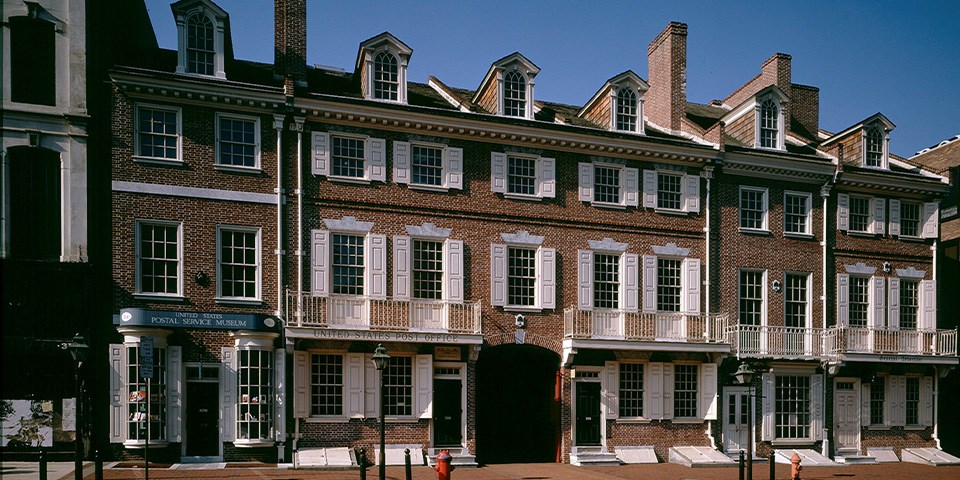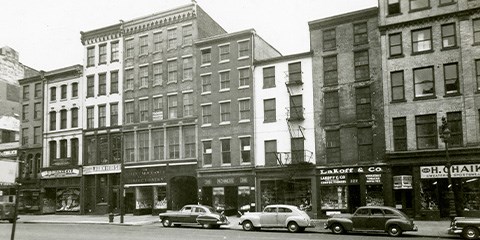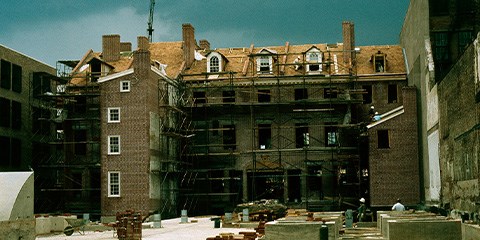Last updated: September 26, 2023
Article
The Market Street Houses

NPS photo
Along Market Street in the Old City section of Philadelphia, stands a row of five historic buildings fronting the entrance to Franklin Court between Third and Fourth Streets. These structures date from the 1700s, but numbers 316, 318, and 322 have special significance—they are the last surviving properties owned by Benjamin Franklin in Philadelphia. The efforts undertaken by the National Park Service to preserve and restore these buildings were part of a larger project to re-establish Franklin Court and preserve the legacy of Benjamin Franklin.
Following his 1785 return from France at the end of the American Revolution, Benjamin Franklin embarked upon an ambitious campaign to improve his property in Franklin Court. Not only did Benjamin Franklin build a large addition for his house, but he also dramatically changed the street entrance to his courtyard by constructing 316, 318, and 322 Market Street. Intended as rental properties, the houses supplemented Franklin’s income and provided a dignified entrance to his courtyard, as numbers 316 and 318 flanked an arched carriageway that led to Franklin’s house in the backyard.

NPS photo

NPS photo
Between the 1950s and 1970s, the National Park Service worked to restore Franklin Court. While teams of archeologists worked to uncover the remains of Franklin’s house in the backyard, other specialists investigated the Market Street properties. At first, they believed that any remnants of the original
1700s buildings were gone, demolished and replaced by 19th century storefronts. In 1959, however, historical architects Charles Grossman and Penelope Batcheler determined that a significant amount of the 1780s construction still survived, particularly within the arched carriageway and the interior walls of the houses. This discovery ensured that the buildings would be preserved and restored.
Over the next fifteen years, work to restore the Market Street Houses progressed at a steady pace:
- Alterations dating from the 1800s were removed, returning the buidlings to their original heights.
- The original 1780s carriageway and interior walls were stabilized and preserved.
- The facades of the buildings were reconstructed using descriptions historical insurance surveys of the buildings.

NPS photo
